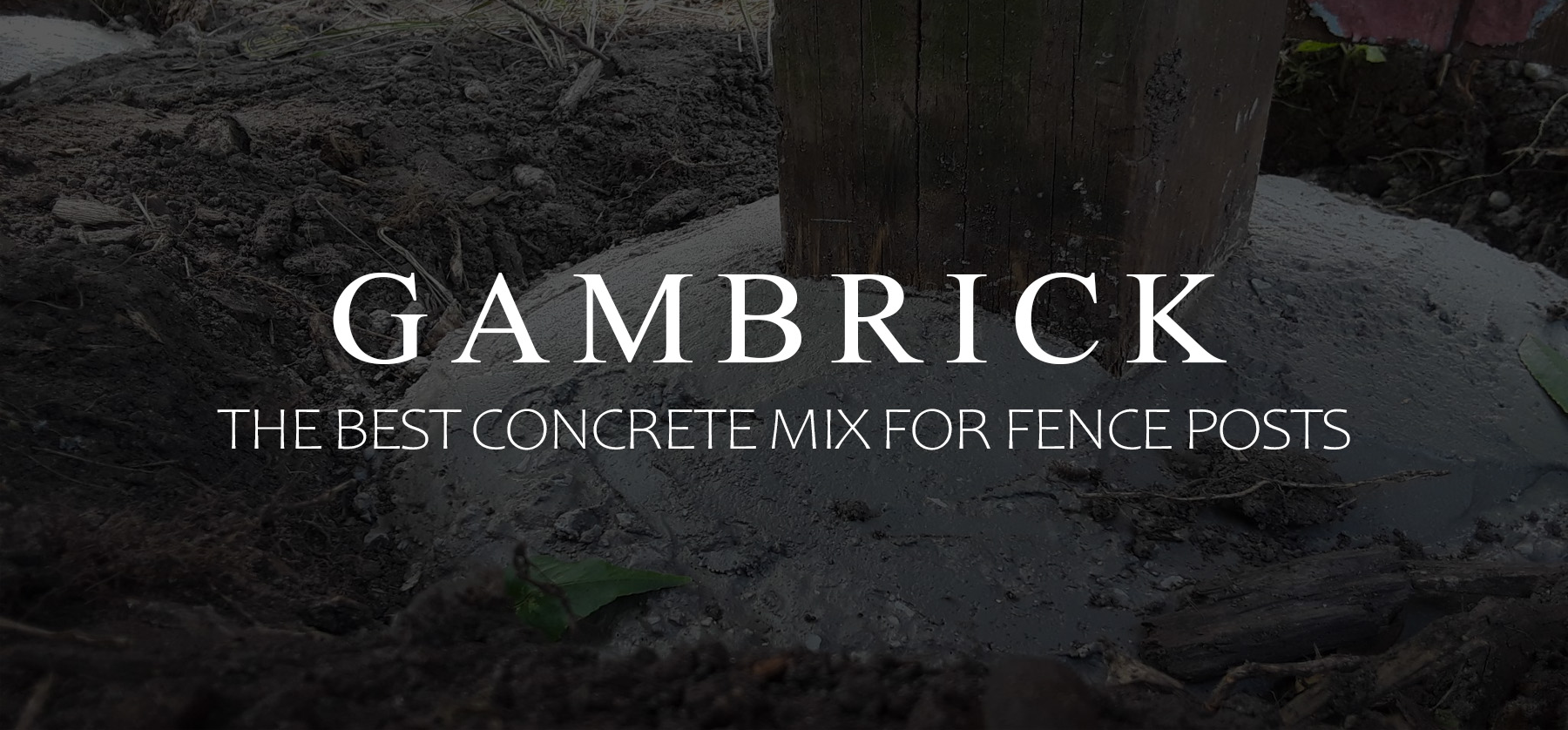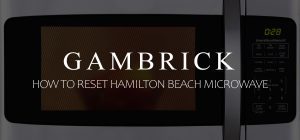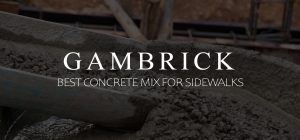
The Best Concrete Mix For Fence Posts
Building your own fence is a great way to save money. It’s not that hard and makes a great DIY project. The strength of any fence are it’s support posts which in some cases are anchored in concrete. Just about any concrete mix works great for setting fence posts, but some definitely work better than others. I’ve been a contractor for over 25 years, and the standard 3500 p.s.i. concrete mix it best. It’s strong, durable, cheap, and easy to make.
You have 3 options when using concrete to set your posts, buy it bagged, order it from a truck, or make your own. For small jobs I use bags, for medium size projects I mix my own, but for large scale jobs I get a delivery.
There are also a few alternatives like Sika Fence Pro Mix, which is an expanding foam.
The best concrete mix for fence posts I’ve found is Quikrete Fast Setting Concrete Mix in a 50 lb bag. It’s 4000 psi, easy to work with, sets up fast, and doesn’t need to be mixed. Just pour it in the hole and soak with water.
It’s important to note that the type of concrete mix you use should vary based on your type of soil, fence post, weather, time of year and job specifications. For example, concrete used to set posts is different than concrete for building ponds or pouring a concrete for a driveway.
Post concrete acts as an anchor to set the post firmly in place, so all you need is a basic strong and heavy concrete mix.
Overall, the 50lb Quikrete Fast Setting Concrete Mix is what I found works best for installing a fence post. It’s easy to work with, sets fast, and is very strong. And I prefer using real concrete vs a synthetic foam.
Quikrete 50lb Fast Setting Concrete Mix
The best concrete mix for fence posts I’ve found is the Quikrete 50lb fast setting mix. You can buy a bag at just about any Home Depot for under $6 bucks a bag. For small to medium size fence jobs, premixed bag are best. A concrete truck is too expensive for small jobs and mixing it myself adds too much work. These bags are cheap enough that any money I’d save by mixing my own concrete is nullified by all the extra time it takes.
The best thing about using the Quikrete fast setting concrete mix is that you don’t even have to mix it. Just pour it into the hole and soak with water. Just by getting wet, the concrete will fully set up and harden. No trays, trowels or tools of any kind. It sounds to good to be true but it isn’t. Just pour it into the hole and water it. That’s it.
The concrete is hard in 20-40 minutes but it takes 28 days to fully cure to 4000 psi. That’s very strong concrete. Even though the bag says 20-40 minutes to get hard, you can walk away from the post after you water the concrete. It’s heavy and stiff enough right away to support any post I’ve ever installed. I wouldn’t put any weight on the post for an hour but you can set all your posts without any delays.
Since the Quikrete fast Setting Mix doesn’t need to be mixed, you can’t really mess things up by over watering it. One of the most common mistakes I see is weak concrete due to over watering the mix. Soupy concrete is a bad thing.
How Many Bag Do I Need?
50 lb Bags are pretty light compared with the 80 lb standard concrete bags. It’s a good thing because it makes the job a little easier but because the bags are smaller you’ll need multiple bags per hole. This all depends on the depth and size of the hole of course, but I usually put figure on using two bags per hole.
The bags cost under $6 bucks per bag so $15 per post is a what I price into my fence jobs for concrete. It’s a little over what I actually need which keeps me on the safe side just in case one of two posts need more concrete than I think.
Concrete Can Be Formed
One of the benefits to using real concrete to support a fence post is that you can form it. Some fence post concrete is totally underground. In these cases foam works fine. But if the post comes up out of the ground then you’ll want concrete.
Concrete can be poured into a tube and shaped smooth for a much better appearance. You can’t do that with foam. If any of your fence post foundation is above ground, use concrete.
Quikrete Fast Setting Mix Is Real Concrete
A lot of people are using synthetic foam fence post fillers, which we’ll talk about later, but I prefer using real concrete. Synthetic foam works great and Sika makes a fantastic product, but I don’t like putting foam in the ground. I prefer doing things the old fashioned way which is using real concrete as a foundation material.
I wouldn’t build my house with a foam foundation. Or a bridge, building or road. So why use foam to support my fence. Sure, foam is lighter and very easy to work with. It sets up fast and can be used in any weather condition or temperature. But I still prefer good old fashioned strong concrete. It’s been used for centuries and it works.
Sika Fence Post Mix
Sika Fence Post Mix is a great product that’s specifically formulated to set a fence post. But it’s not concrete. It’s a 2-part, pre-measured polyurethane resin. It’s mixed right in the bag and poured into the hole which produces an expanding foam. This foam is strong enough to support just about any size fence post. And it’s suitable for all types of posts including wood, steel and PVC.
It’s important to note that Sika requires no water to mix. This can be a big advantage if your setting posts where water isn’t available. It’s also very light when compared to concrete. A bag weighs only 2.5 lbs vs a 50lb bag of concrete.
While pretty much any concrete mix can do the job, using a product that’s been designed specifically to set a fence post can make your life a little easier.
The Sika mix has an easy installation process and can set in only 3 minutes . It has high strength and is resistant to water uptake, meaning it will not rot your wooden fence posts, crack in the winter due to moisture freezing, or shift your fence over time.
Sika Fence Post Mix is can be used in cold weather without requiring any additives.
Pros
Real concrete mixes may be a lot cheaper, but they’re heavy, messy, require water, and take longer to set. Concrete is also easy to mess up. If you use too much water you’ll weaken the concrete and the post. With Sika, you don’t have to worry about any of that. Just mix the components together and pour it into the hole. The foam expands and your done.
- Easy to work with
- Light weight
- Doesn’t require water
- Strong and durable in any weather condition.
Cons
A negative that comes along with using SIKA Postfix Fence Post Mix is the price. It costs $13.75 for a 2.5 pound (33 oz) bag at Home Depot. This bag size replaces a 50 pound bag of traditional concrete mix which only costs around $6.00. So essentially double the money.
It’s also a chemical. If your concerned about using foam products in the ground then you’ll probably be better off with old fashioned concrete.
Another negative with Sika is that you can’t mix it yourself like you can with concrete. Concrete is just sand, Portland Cement and Aggregate. If you know how, you can buy the ingredients and mix it yourself, which is very cheap. You can also alter the ingredients to create the right strength you need for the job. None of this is possible with Sika.
You can’t work or form Sika like you can concrete. For below grade fence posts this isn’t a problem. But if you’ve got one where the pier comes out of the ground then Sika Fence Post Mix won’t work.
- Expensive compared with real concrete
- A chemical formula
- You can’t mix it yourself or alter it’s strength
- Can’t be formed
While Sika is a good product, I consider it an alternative to concrete, not a replacement. While there may be a few rare situations where a bag of Sika Fence Post Mix could come in handy, I prefer the 50lb bag of Quikrete concrete.
Traditional Concrete
If you have a large scale fence job, want to mix your own concrete, or just prefer the standard 3500 psi 80 lb premixed bag, that’s fine. Just about any concrete mix is good for setting a fence post. Provided it has the proper strength which most concrete has when properly mixed.
Below are a few tips when buying concrete or mixing your own.
There are a lot of options when it comes to buying a premixed bag or mixing your own. make sure to buy a mix that has the right strength. As a general rule we use 3500 – 5000 psi strength concrete to set all of our fence posts.
Make sure you don’t add too much water when mixing the concrete. The less water you use the stronger your concrete will be as long as it’s fully mixed. Many people over water concrete because it makes it easier to work with, but they don’t realize how much they’ve weakened it. Too much water can make concrete brittle and prone to cracks.
Regular concrete takes a little more time to set up than fast setting concrete, but it’s still fast enough to set fence posts. Set your post in place, fill the hole and then move to the next post. Concrete is strong enough on its own to support the post but not resist the weight of the fence section. I typically don’t start building the fence until the next day.
Just like with fast setting concrete, traditional concrete isn’t fully cured for 28 days.
Build A Strong Post Base
No matter what concrete mix you end up using, the most important thing is that you build a strong base for your fence post.
Make sure the hole is wide enough and deep enough for the type and size fence post your installing. The fence is only as strong as the posts that support it. Weak posts will cause your fence to shift and possibly fall down.
This is one of the main reasons I prefer using concrete over a synthetic foam. Concrete is very heavy. Even if you mix the concrete wrong and weaken it, you’ve still got a 100+ lb anchor at the bottom of your post weighing it down. If you dig deep and use multiple bags you could easily have 200+ lbs of concrete. That’s a pretty strong base for your fence.
Make sure to use a strong post too. It’s not all about the foundation material but also the post itself. A weak post will fail overtime.
If your fence post is a bolt down then make sure to use strong, good quality bolts and drill them deep. The post will only be as strong as the bolts. In cases like this your concrete is just an anchor, the metal base is what holds up the post and supports the fence.
Make sure the concrete footing has a flat bottom and is straight down, not on an angle. If the bottom of your footing has a point it can start to drill itself down into the earth and sink. If it’s on an angle the fence could start to lean.
Summary: The Best Concrete Mix For Fence Posts
Building your own fence is a great way to save money. It’s not that hard and makes a great DIY project. The strength of any fence is in it’s support posts which in some cases is anchored in concrete. Just about any concrete mix works great for setting the fence posts. But some definitely work better than others. And there are even a few alternatives like Sika Fence Pro Mix, which is an expanding foam. In terms of concrete you have 3 main options, buy a premixed bag, mix it yourself, or buy it from a company. For a small to mid sized job I recommend going with premixed.
The best concrete mix for fence posts I’ve found is Quikrete Fast Setting Concrete Mix in a 50 lb bag. It’s 4000 psi, easy to work with, sets up fast, and doesn’t need to be mixed. Just pour it in the hole and soak with water.
It’s important to note that the type of concrete mix you use should vary based on your type of soil, fence post, weather, time of year and job specifications.
Overall, the 50lb Quikrete Fast Setting Concrete Mix is what I found works best for installing a fence post. It’s easy to work with, sets fast, and is very strong. And I prefer using real concrete vs a synthetic foam.
If you have any questions or comments e-mail us any time. We’d love to hear from you.

John Mazzuca | About | More Posts |
Custom Home Builder
John Mazzuca is a custom home designer and builder at Gambrick with over 25 years experience in the construction industry. John has designed, built and/or remodeled hundreds of homes, small buildings, and commercial projects. He writes about business, real estate, home building, and household electronics. His work has been featured in Fox Business, Better Homes & Garden, House Beautiful, and more.




















